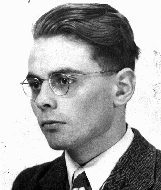You searched for: %E5%9C%A8%E7%BA%BF%E9%AA%B0%E5%AE%9D%E6%B8%B8%E6%88%8F,%E9%AA%B0%E5%AE%9D%E6%B8%B8%E6%88%8F%E8%A7%84%E5%88%99,%20%E8%B5%8C%E5%A4%A7%E5%B0%8F%E6%80%8E%E6%A0%B7%E8%B5%A2%E9%92%B1,%20%E3%80%90%E6%89%93%E5%BC%80%E7%BD%91%E5%9D%80%E2%88%B6789yule.com%E3%80%91%E9%AA%B0%E5%AE%9D%E7%AD%96%E7%95%A5,%E9%AA%B0%E5%AE%9D%E6%A6%82%E7%8E%87,%E6%BE%B3%E9%97%A8%E8%B5%8C%E5%A4%A7%E5%B0%8F,%E6%8A%BC%E5%8D%95%E5%8F%8C%E6%B8%B8%E6%88%8F,%E9%AA%B0%E5%AE%9D%E5%A4%A7%E5%B0%8F%E6%94%BB%E7%95%A5%E5%BF%85%E8%83%9C%E6%B3%95,%E3%80%90%E8%B5%8C%E5%9C%BA%E5%9C%B0%E5%9D%80%E2%88%B6789yule.com%E3%80%91%E7%BD%91%E5%9D%80ZkEEfkf0BD0BnEnD
<< Previous | Displaying results 276-300 of 484 for "%E5%9C%A8%E7%BA%BF%E9%AA%B0%E5%AE%9D%E6%B8%B8%E6%88%8F,%E9%AA%B0%E5%AE%9D%E6%B8%B8%E6%88%8F%E8%A7%84%E5%88%99,%20%E8%B5%8C%E5%A4%A7%E5%B0%8F%E6%80%8E%E6%A0%B7%E8%B5%A2%E9%92%B1,%20%E3%80%90%E6%89%93%E5%BC%80%E7%BD%91%E5%9D%80%E2%88%B6789yule.com%E3%80%91%E9%AA%B0%E5%AE%9D%E7%AD%96%E7%95%A5,%E9%AA%B0%E5%AE%9D%E6%A6%82%E7%8E%87,%E6%BE%B3%E9%97%A8%E8%B5%8C%E5%A4%A7%E5%B0%8F,%E6%8A%BC%E5%8D%95%E5%8F%8C%E6%B8%B8%E6%88%8F,%E9%AA%B0%E5%AE%9D%E5%A4%A7%E5%B0%8F%E6%94%BB%E7%95%A5%E5%BF%85%E8%83%9C%E6%B3%95,%E3%80%90%E8%B5%8C%E5%9C%BA%E5%9C%B0%E5%9D%80%E2%88%B6789yule.com%E3%80%91%E7%BD%91%E5%9D%80ZkEEfkf0BD0BnEnD" | Next >>
-
The 90th Infantry Division during World War II
ArticleThe 90th Infantry Division participated in major WWII campaigns and is recognized for liberating the Flossenbürg concentration camp in 1945.
-
Passport stamped with "J" for "Jude"
PhotoPassport issued to Lore Oppenheimer, a German Jew, with "J" for "Jude" stamped on the card. "Sara" was added to the names of all German Jewish women. Hildesheim, Germany, July 3, 1939.

-
Lea Ofner-Szemere
ID CardLea was born in the city of Sombor in northeastern Yugoslavia. When she was 3 years old, her parents divorced and she moved to Vienna with her mother, who taught English and French to Austrian children. Lea enjoyed living in Vienna as a child. 1933-39: Lea returned to Sombor almost every year to visit her mother's relatives. There, she became reacquainted with her younger half-sister, Julia, and her older half-brother, Francis, and would miss them when she returned to Vienna. In 1938, the Germans annexed…

-
Deportations to Killing Centers
ArticleWith help from allies and collaborators, German authorities deported Jews from across Europe to killing centers. The vast majority were gassed almost immediately after their arrival in the killing centers.

-
The Holocaust in Macedonia: Deportation of Monastir Jewry
ArticleIn March 1943, Bulgarian authorities transported the entire Jewish community of Monastir to a transit camp from which they were deported to Treblinka.

-
Kurt Gerstein
ArticleSS officer Kurt Gerstein was horrified by what he witnessed at the Belzec killing center. Learn about how he recorded what he witnessed and about his postwar fate.
-
Israel Yitzak Kisielnicki
ID CardThe youngest of three children, Israel Yitzak was born to Jewish parents living 35 miles east of Warsaw in the small, predominantly Jewish town of Kaluszyn. Israel's mother was a housewife, and his father was a merchant who often traveled on business, by horse and wagon, to Warsaw. Israel attended public school and also received religious instruction. 1933-39: When Germany invaded Poland several days ago, many kids Israel's age, afraid of what would happen if the Germans occupied Poland, fled to the USSR,…

-
Reichstag Fire Decree
ArticleThe Reichstag Fire Decree of February 1933 restricted individual freedoms, and allowed Hitler's government to overrule state and local laws and overthrow state and local governments.

-
World War II Dates and Timeline
ArticleWorld War II was the largest and most destructive conflict in history. Learn about key WWII dates in this timeline of events, including when WW2 started and ended.

-
William Denson describes the nature of the evidence uncovered for postwar trials of concentration camp personnel
Oral HistoryWilliam Denson graduated from the US Military Academy at West Point in 1934 and attended Harvard Law School. He returned to West Point to teach law from 1942 until 1945. In January 1945, Denson accepted the position of Judge Advocate General (JAG) in Europe and was assigned to US Third Army headquarters in Germany. He took part in more than 90 trials against Germans who had committed atrocities against downed American pilots. In August 1945, Denson became chief prosecutor for the US government at the…

-
The Aftermath of the Holocaust
Animated MapView an animated map describing some of the challenges survivors faced in the aftermath of the Holocaust, when many feared returning to their former homes.

-
Hermann Ludwig Maas
ArticleHermann Ludwig Maas, a Protestant pastor in Heidelberg, Germany, was a rescuer and clergyman who stood in solidarity with the Jewish community.
-
Dr. Robert Ritter visits a "Gypsy camp"
PhotoDr. Robert Ritter talks to several residents in a Zigeunerlager ("Gypsy camp"). Hamburg, Germany, 1940. During the Nazi era, Dr. Robert Ritter was a leading authority on the racial classification of people pejoratively labeled “Zigeuner” (“Gypsies”). Ritter’s research was in a field called eugenics, or what the Nazis called “racial hygiene.” Ritter worked with a small team of racial hygienists. Among them were Eva Justin and Sophie Ehrhardt. Most of the people whom Ritter studied and…

-
Eva Justin interviews a Romani woman interned in a "Gypsy camp"
PhotoA color photograph of Eva Justin interviewing a Romani woman interned in a "Gypsy camp." Vienna, Austria, 1940. During the Nazi era, Dr. Robert Ritter was a leading authority on the racial classification of people pejoratively labeled “Zigeuner” (“Gypsies”). Ritter’s research was in a field called eugenics, or what the Nazis called “racial hygiene.” Ritter worked with a small team of racial hygienists. Among them were Eva Justin and Sophie Ehrhardt. Most of the people whom Ritter studied and…

-
A family interned in a "Gypsy camp"
PhotoA family stands outside of their wagon while interned in a Zigeunerlager ("Gypsy camp"). In the background, children are crowded around Eva Justin. Justin worked for the Center for Research on Racial Hygiene and Demographic Biology. Schleswig-Holstein, Germany, 1938. During the Nazi era, Dr. Robert Ritter was a leading authority on the racial classification of people pejoratively labeled “Zigeuner” (“Gypsies”). Ritter’s research was in a field called eugenics, or what the Nazis called…

-
Georg Grosz
ArticleGeorg Grosz was a German artist of the Dada movement. His books, which had many of his best-known plates, were burned in Nazi Germany in 1933. Learn more.

-
1943: Key Dates
ArticleExplore a timeline of key events during 1943 in the history of Nazi Germany, World War II, and the Holocaust.

-
Charles E. Coughlin
ArticleCharles Coughlin, Catholic priest and populist leader, promoted antisemitic and pro-fascist views. In the 1930s, he was one of the most influential public figures in the US.
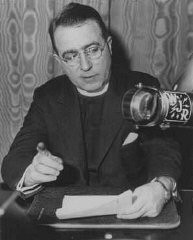
-
Janka Glueck Gruenberger
ID CardJanka was one of seven children raised in a Yiddish-and Hungarian-speaking household by religious Jewish parents in the city of Kosice. In 1918, when she was 20 years old, Kosice changed from Hungarian to Czechoslovak rule. Three years later, Janka married Ludovit Gruenberger, and their three children were born Czech citizens. 1933-39: Janka was an accomplished milliner, and she helped her husband run a tailoring business from their apartment. Like many Jews in Kosice, Janka and Ludovit were upset when…
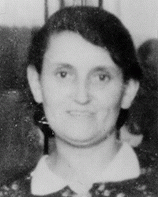
-
Mendel Grynberg
ID CardMendel was raised in a large, Yiddish-speaking, religious Jewish family in Sokolow Podlaski, a manufacturing town in central Poland with a large Jewish population of about 5,000. Upon completing school, Mendel worked as a shoemaker. He was also active in a local Zionist organization. 1933-39: Mendel was married and had a family when the Germans invaded Poland on September 1, 1939. Aircraft bombed the town's market and other civilian targets before victorious German troops marched into Sokolow Podlaski on…
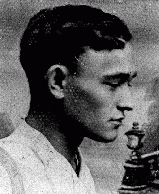
-
Grietje Polak
ID CardGrietje was born to a large religious Jewish family in Amsterdam. When she was in her mid-20's, she married Frederik Polak, an accountant. The Polaks had a son, Jacob, and three daughters, Julia, Betty and Liesje. They lived in simple quarters on the second floor of a house. 1933-39: Creating an atmosphere of Jewish observance in the home was important to Grietje and her husband. They loved to celebrate the Sabbath and the Jewish holidays with their four children. Grietje taught shorthand and needlepoint…

-
Wolfgang Kusserow
ID CardWhen Wolfgang was an infant, his parents became Jehovah's Witnesses. His father moved the family to the small Westphalian town of Bad Lippspringe when Wolfgang was 9. Their home became the headquarters of a new Jehovah's Witness congregation. Wolfgang and his ten brothers and sisters grew up studying the Bible daily. 1933-39: The Kusserows were under close scrutiny by the Nazi secret police because of their religion. As a Jehovah's Witness, Wolfgang believed that his highest allegiance was to God and His…

-
Gregor Wohlfahrt
ID CardGregor was the second of six children born to Catholic parents in a village in the part of Austria known as Carinthia. His father was a farmer and quarryman. Disillusioned with Catholicism, his parents became Jehovah's Witnesses and raised their children according to that religion. As a boy, Gregor loved mountain climbing and skiing. 1933-39: Gregor attended school and worked as a waiter. The situation for Jehovah's Witnesses worsened after Germany annexed Austria in March 1938; Witnesses refused to swear…
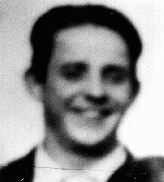
-
Mayer List
ID CardMayer was born into a Jewish family in a village near Warsaw. His family was active there in the workers' movement. They decided to emigrate when Mayer was a child; his father hoped to find work in Argentina. As a young man, Mayer was arrested for being a communist. In prison, he organized a hunger strike. The police released him to keep him from recruiting the other prisoners to communism. 1933-39: Mayer joined one of the International Brigades and went to Spain to fight in the civil war against Franco…

-
Gideon Boissevain
ID CardGideon was known affectionately as "Gi" by his family and friends. His parents were descended from the Huguenots, French Protestants who came to the Netherlands in the 16th and 17th centuries. Gi had two brothers and two sisters, and his father worked in the insurance business. 1933-39: Gi had a large circle of friends, both Christians and Jews, and after school they all liked to get together. He and his friends enjoyed taking bike trips, having parties, and playing records. In the mid-1930s his parents…
